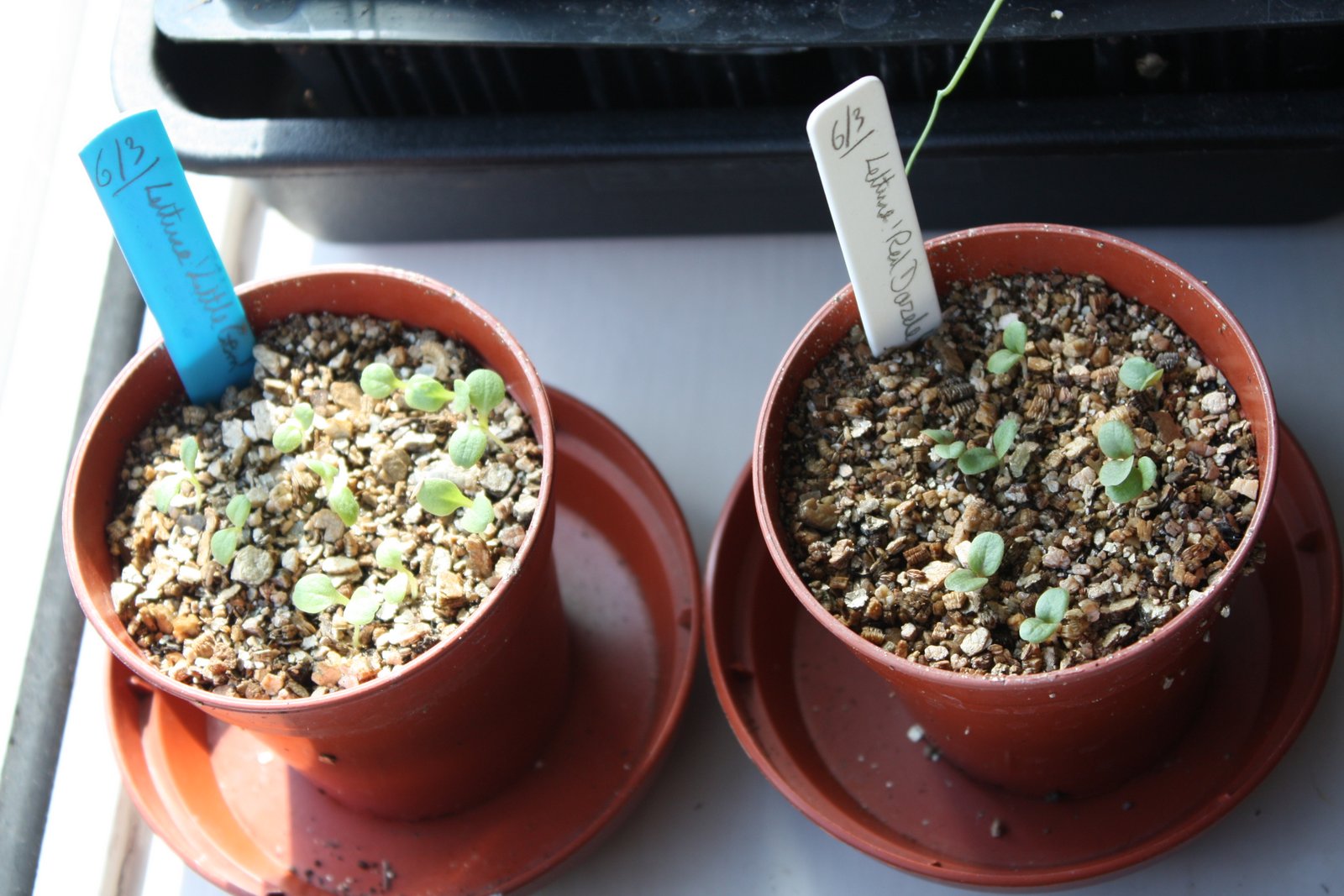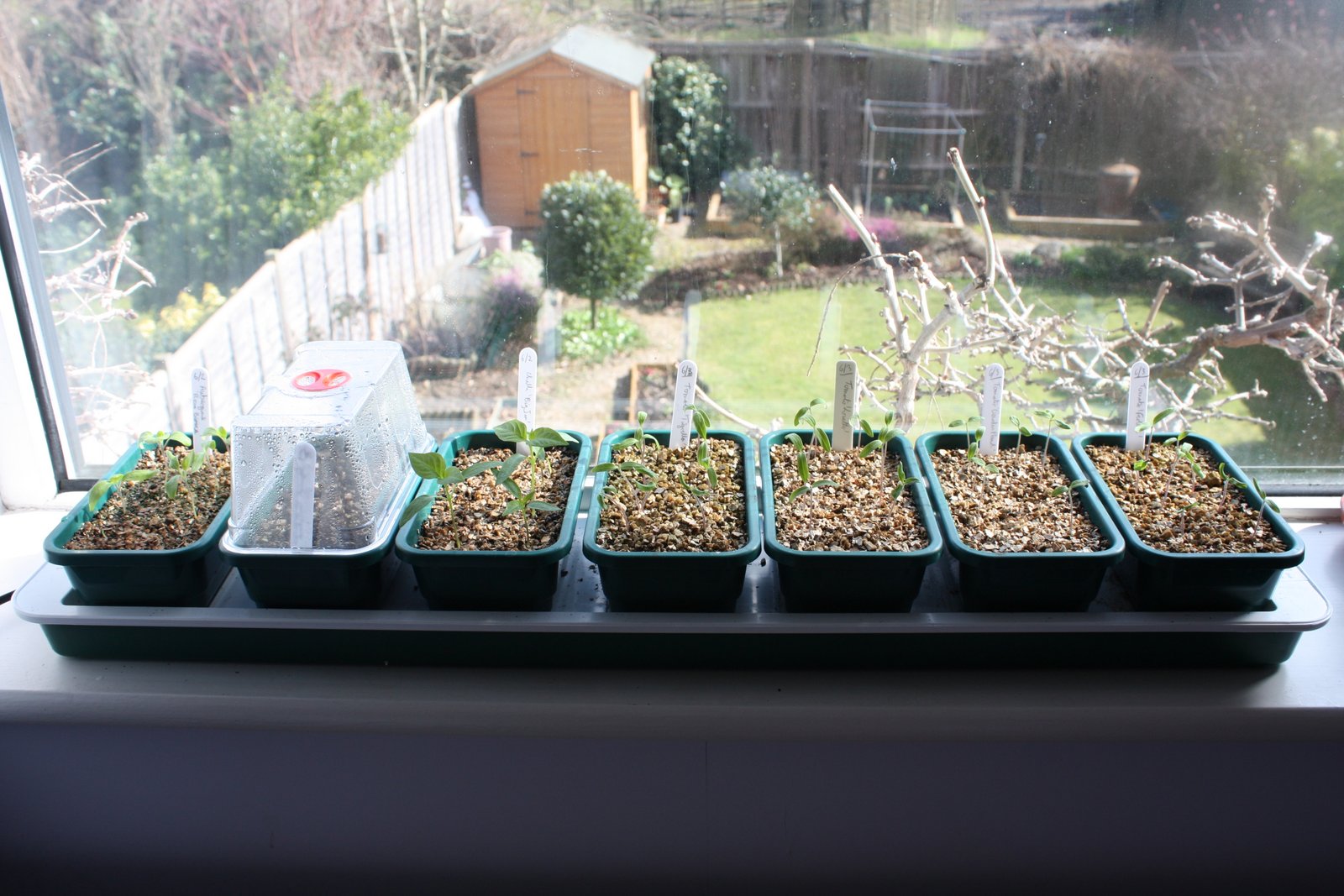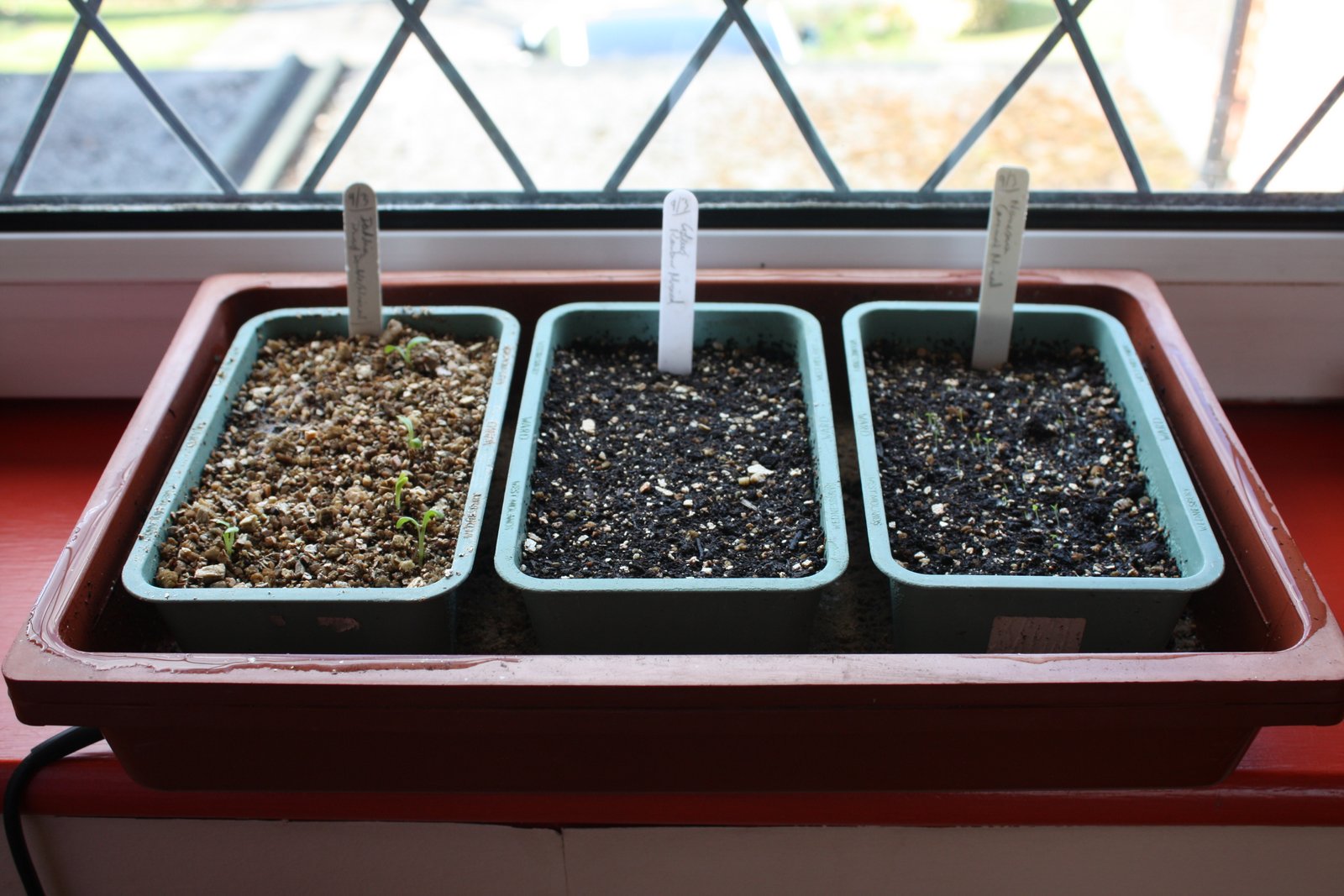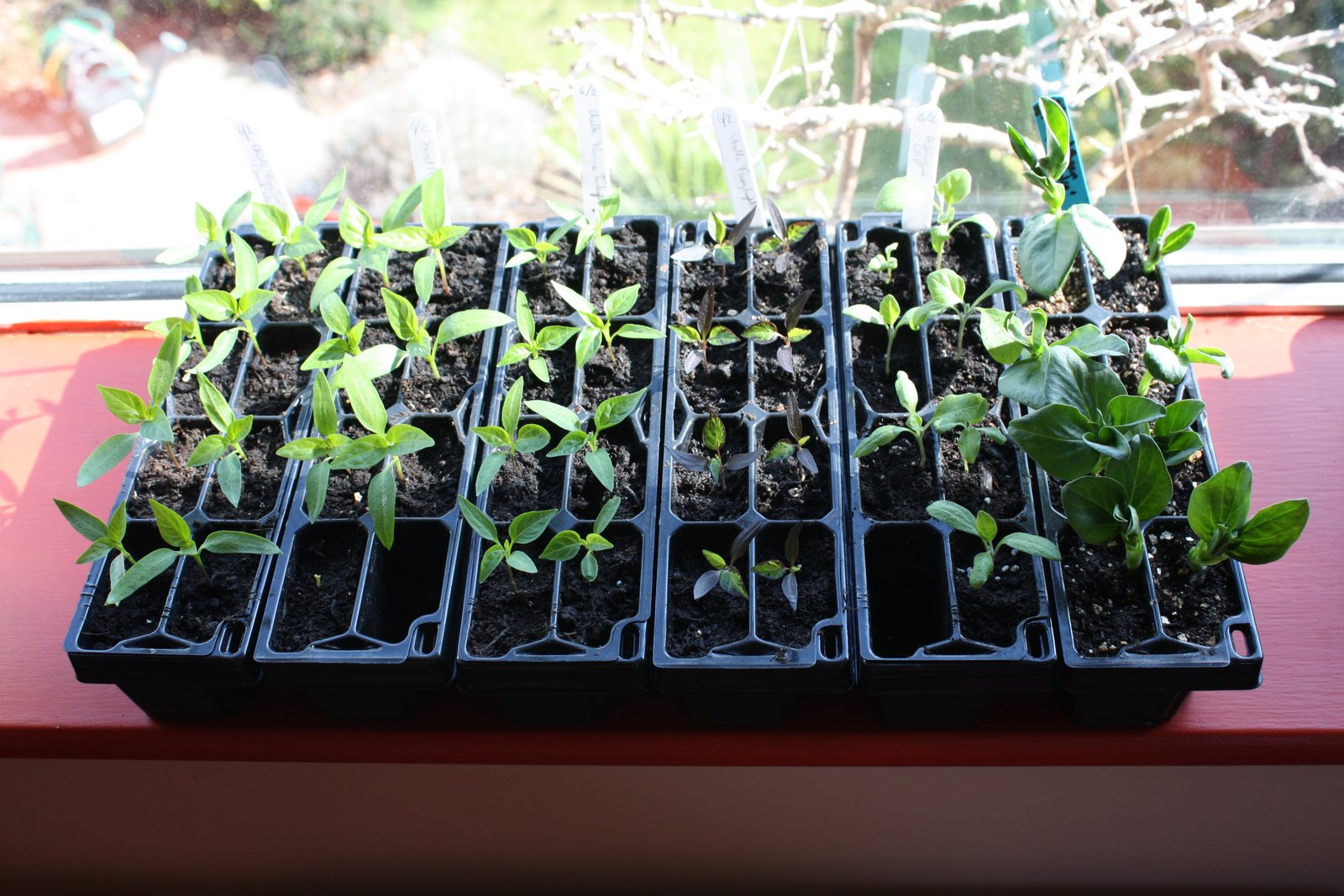Further to the (almost) free plants that you can generate using vegetative propagation techniques, a very reasonably priced way to produce new plants is by growing them from seed. Packets of seed are cheap when compared to grown plants, even expensively bred F1 hybrid seeds cost a small number of pounds with the potential to produce many plants.
Growing from seed is a favoured option for many vegetable growers because of the very wide range of cultivars that are available, allowing the selection of crops that will thrive in your locality and give the taste that you want. There are increasing numbers of plug and grafted plants available, these allow you a head start, but as yet they do not offer the wide range that seeds give. As we described last season, our approach to growing from seed is generally to aim to produce our own version of plug plants by the time that the planting out season arrives.
We start indoor seed sowing fairly early in the year, usually in early February. We are not trying to grow prize winning onions and leeks which are often started earlier, rather we are looking to have healthily sized plants ready for planting out once the soil starts to warm up in the spring.
A heated propagator is a great help, but is not suitable for all seeds. Most seed packets will specify if extra heat is required and some seeds have very specific requirements, but a general rule of thumb is that if the final plant is something that will thrive in sunshine and heat (tomatoes, peppers, aubergines, squashes and flowers like dahlias and sunflowers) then some heat will help to stimulate quick germination. Our experience is that for leafier crops such as the brassicas then a slightly cooler, and thus slower, start to life gives sturdier (less leggy) seedlings. Lettuces are an interesting case as their seeds show dormancy in higher temperatures, so are best kept cooler. At this time of year a cool windowsill is ideal for lettuces.
Lettuce seedlings
We don’t have a heated greenhouse or any external power, so much of our earlier seed sowing is inside the house. We have experimented with different propagators over the years and have found that temperature controlled propagators have proved unnecessary and that larger ones have been unwieldy on window sills. This year we invested in a simple long thin propagator tray with 7 seperate small seed trays with lids allowing us to control different plants development at a more individual level than in a larger propagator. So far this has worked well.
The new propagator
As the picture shows, this set up allows different treatment of different seeds as they start to germinate.
A key thing is to prick out the seeds before they get too big. The usual time is as soon as the true leaves start to appear. It is worth remembering that roots develop first and you want to be able to extract your new plants from the seed tray with as little damage to the roots as possible so that they settle into their new environment quickly.
On the subject of roots here is a quick diversion onto growing media. Compost for seeds doesn’t need high nutrient levels as a lot of the early fuel comes from food stored in the seed itself, what is important is the capacity to retain moisture and oxygen, so there needs to be a decent amount of porosity. We use commercial seed composts as they provide both decent water retention and good porosity, however we add vermiculite to increase the porosity, making it easier for the roots to grow. The coarse structure of vermiculite also helps to ensure that the seed coating is pulled off the emerging plants as the seed leaves swell. We always seive composts to get rid of the coarser lumps that would block root growth. Seed composts tend to have fewer of these, but they are still there. If you’ve never tried seiving compost, have a go and see just how much grot there is.
We also use a seed tray sized propagator, but again often use small seed trays or pots inside the propagator to allow us to control when the individual types of plants are removed.
Flower seedlings at different stages of development
The plants are pricked out into different types of container depending on the size of the seedling. Cucurbits (squashes etc.) develop very quickly, so these tend to go into individual pots. Peppers and aubergines come on more slowly, so we use smaller units that take up less space and allow the seedlings to develop into our version of plug plants.
‘Plug plants’ March 2013
As the weather warms up and the plants grow, we move them to less protected environments such as cold frames, the greenhouse and a warm spot on the patio to ‘harden off’. Of course in weather like we are having at the moment, this all gets a bit delayed and we are rapidly running out of window sills, so like all other gardeners we have our fingers crossed for a warmer spell.




